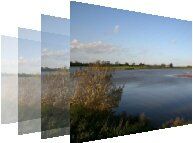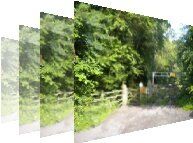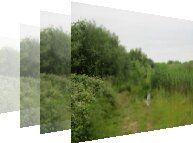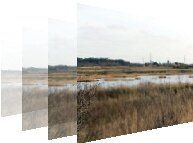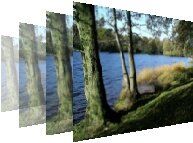
Free birdwatching magazine and guide to finding birds
List of Services
-
Notts BirdersWeb site List Item 1
The society aims to promote an interest in birds in Nottinghamshire. We are a friendly group for anybody interested in wild birds, living in, or visiting, Nottinghamshire, irrespective of their level of knowledge, experience or skill.
-
Nottinghamshire Wildlife TrustWeb site List Item 2
Taking action locally to safeguard wildlife and special green spaces is at the heart of what we do. The Trust is a registered charity and relies on the support of local people and volunteers who are passionate about the county’s wildlife. Do you want to help us do more?
-
RSPB Nottingham Local GroupWeb site List Item 3
This is the website of the Nottingham Local Group. RSPB local groups are a great way to meet friendly, like-minded people in your area while learning more about birds and wildlife.
Attenborough Nature Reserve
Situated 7 Kilometres south west of Nottingham's city centre, this nature reserve was once an area of wet grassland alongside the River Trent.....
Beckingham Marshes RSPB
Beckingham Marshes is a conservation project working with a local grazier to re-establish the wet grazing marsh habitat lost after World War II that lies along the River Trent floodplain between the village of Beckingham and Misterton
Besthorpe Nature Reserve
Besthorpe Nature Reserve is a restored sand and gravel quarry north of Collingham on the east bank of the Trent. Breeding cormorant, reed warbler, little-ringed plover.....
Clumber Park
Clumber Park is over 3,800 acres (15 km²) in extent, including woods, open heath and rolling farmland. It contains the longest double avenue of lime trees in Europe. The mature trees and dead and decaying ancient trees provide good habitats for woodpeckers and all three species can be found here.
Colwick Country Park
Cowlick Country Park is a large, diverse area of water, woodland and meadows owned by Nottingham City Council. It is nationally important for its population of wildfowl that are present during the winter..
Bunny Old Wood (West)
Bunny Old Wood is one of the oldest natural features of the South Nottinghamshire landscape - the north-facing slope is likely to have been tree-covered for over 10,000 years. All three woodpeckers and other woodland birds....
Idle Valley Nature Reserve
One of the top birding sites in the UK, making this reserve a site of national importance. Breeding turtle dove and a list of rarities that would rival any birdwatching location ....
Sherwood Forest NNR
Once part of the 10,000 acre Royal Forest of Sherwood, the woodland is dominated by native oaks and other native trees such as silver birch, rowan, holly and hawthorn .Budby South Forest,(RSPB) in the northern half of the site, is dominated by ling heather and supports a diverse range of insects and ground nesting birds such as woodlark , nightjar and tree pipit..
Wollaton Park
Wollaton Park is a deer park and home of Wollaton Hall, Nottingham Natural History Museum and Nottingham Industrial Museum in the heart of Nottingham. All three woodpeckers are present including lesser-spotted. Other notable species present at the site are populations of jay, nuthatch and sparrowhawk....
NOTTINGHAMSHIRE
Browse a range of New and used Avifauna for the English county of Nottinghamshire.
Also you may wish to view a wide selection of suitable field guides by
Birds of Nottinghamshire
DThe last comprehensive review of Nottinghamshire's birds was produced more than four decades ago. Much has changed since then, and a new avifauna is long overdue. This book draws together historic reports from the 19th Century, records from the files of the county bird club (Nottinghamshire Birdwatchers), and data from national and regional surveys and monitoring programmes. The resulting account presents an overview of the present state of the county's birdlife, set against a context of environmental and climatic change. The gravel pits in the Trent and Idle Valleys form major corridors for birds moving across Britain and Nottinghamshire has attracted more than its share of national rarities. These include Britain's first Egyptian Nightjar and Lesser Yellowlegs in the 19th Century, Bufflehead, Redhead, Cedar Waxwing and breeding Black-winged Stilts in the 20th Century, and a memorable nesting attempt by European Bee-eaters in 2017.
Birds of Nottinghamshire:
This County bird book brings the record of Nottinghamshire's ornithology up to date (1975),and presents it in an easily usable form for today's large numbers of birdwatchers - whether local,visiting or just interested in birds anywhere.The systematic list,the first comprehensive one since 1907,is designed to answer the innumerable questions on arrival and departure times of migrants,on recorded visits by rarities,or changes in numbers or distribution.In the earlier chapters,the county's various habitats and their bird populations are discussed and this concentrated look at a limited area gives an unusually sharp picture of the status and problems of bird life today,on how density and distribution are affected by the ever-faster rate of change resulting from man's activities.The Editor,Austen Dobbs,is county recorder for Nottinghamshire birds,and recorder of the Trent Valley Bird Watchers.He has organised many species or area studies,of which some have been published in societies' annual reports.
Please note that we receive many hundreds of e-mails weekly. We will try our best to respond to your enquiry as efficiently and quickly as possible. If your enquiry relates to reserve and birding site access, please contact the relevant organisation. Sick, injured or young birds to RSPCA.
Enquiries about the sale of used birding equipment or ornithology books should be sent to the contact below.
Thank you
Join our mailing list
Contact Us
We will get back to you as soon as possible
Please try again later


